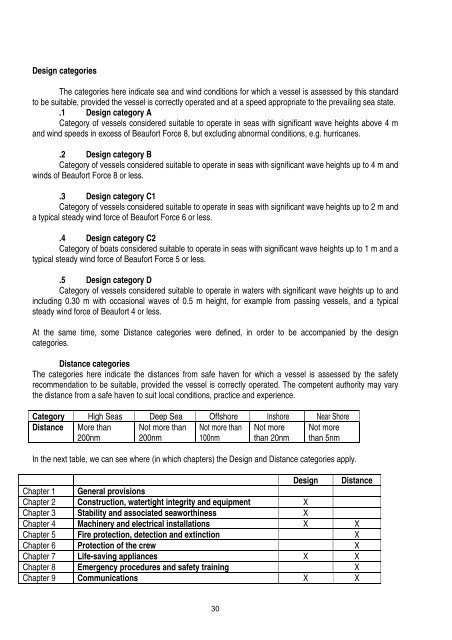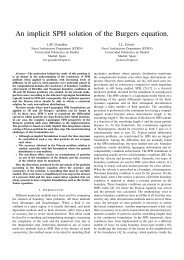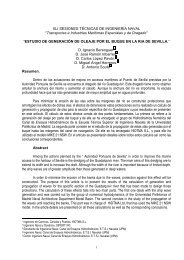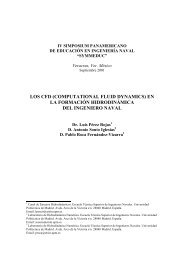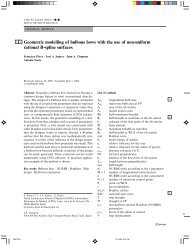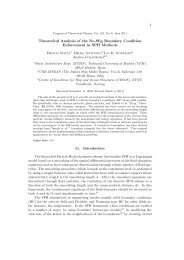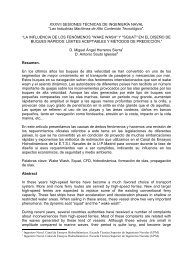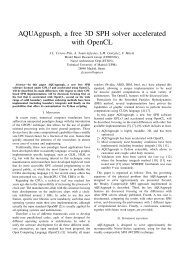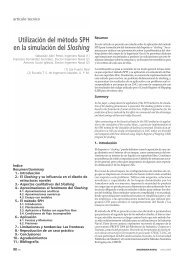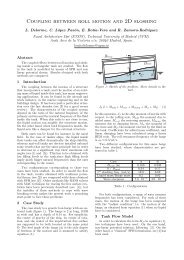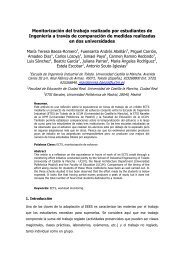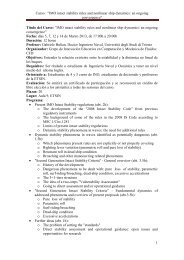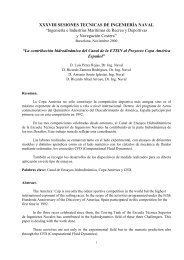imo and the safety of fishing vessels: past, present and future
imo and the safety of fishing vessels: past, present and future
imo and the safety of fishing vessels: past, present and future
You also want an ePaper? Increase the reach of your titles
YUMPU automatically turns print PDFs into web optimized ePapers that Google loves.
Design categories<br />
The categories here indicate sea <strong>and</strong> wind conditions for which a vessel is assessed by this st<strong>and</strong>ard<br />
to be suitable, provided <strong>the</strong> vessel is correctly operated <strong>and</strong> at a speed appropriate to <strong>the</strong> prevailing sea state.<br />
.1 Design category A<br />
Category <strong>of</strong> <strong>vessels</strong> considered suitable to operate in seas with significant wave heights above 4 m<br />
<strong>and</strong> wind speeds in excess <strong>of</strong> Beaufort Force 8, but excluding abnormal conditions, e.g. hurricanes.<br />
.2 Design category B<br />
Category <strong>of</strong> <strong>vessels</strong> considered suitable to operate in seas with significant wave heights up to 4 m <strong>and</strong><br />
winds <strong>of</strong> Beaufort Force 8 or less.<br />
.3 Design category C1<br />
Category <strong>of</strong> <strong>vessels</strong> considered suitable to operate in seas with significant wave heights up to 2 m <strong>and</strong><br />
a typical steady wind force <strong>of</strong> Beaufort Force 6 or less.<br />
.4 Design category C2<br />
Category <strong>of</strong> boats considered suitable to operate in seas with significant wave heights up to 1 m <strong>and</strong> a<br />
typical steady wind force <strong>of</strong> Beaufort Force 5 or less.<br />
.5 Design category D<br />
Category <strong>of</strong> <strong>vessels</strong> considered suitable to operate in waters with significant wave heights up to <strong>and</strong><br />
including 0.30 m with occasional waves <strong>of</strong> 0.5 m height, for example from passing <strong>vessels</strong>, <strong>and</strong> a typical<br />
steady wind force <strong>of</strong> Beaufort 4 or less.<br />
At <strong>the</strong> same time, some Distance categories were defined, in order to be accompanied by <strong>the</strong> design<br />
categories.<br />
Distance categories<br />
The categories here indicate <strong>the</strong> distances from safe haven for which a vessel is assessed by <strong>the</strong> <strong>safety</strong><br />
recommendation to be suitable, provided <strong>the</strong> vessel is correctly operated. The competent authority may vary<br />
<strong>the</strong> distance from a safe haven to suit local conditions, practice <strong>and</strong> experience.<br />
Category High Seas Deep Sea Offshore Inshore Near Shore<br />
Distance More than Not more than Not more than Not more Not more<br />
200nm 200nm<br />
100nm than 20nm than 5nm<br />
In <strong>the</strong> next table, we can see where (in which chapters) <strong>the</strong> Design <strong>and</strong> Distance categories apply.<br />
Design Distance<br />
Chapter 1 General provisions<br />
Chapter 2 Construction, watertight integrity <strong>and</strong> equipment X<br />
Chapter 3 Stability <strong>and</strong> associated seaworthiness X<br />
Chapter 4 Machinery <strong>and</strong> electrical installations X X<br />
Chapter 5 Fire protection, detection <strong>and</strong> extinction X<br />
Chapter 6 Protection <strong>of</strong> <strong>the</strong> crew X<br />
Chapter 7 Life-saving appliances X X<br />
Chapter 8 Emergency procedures <strong>and</strong> <strong>safety</strong> training X<br />
Chapter 9 Communications X X<br />
30


